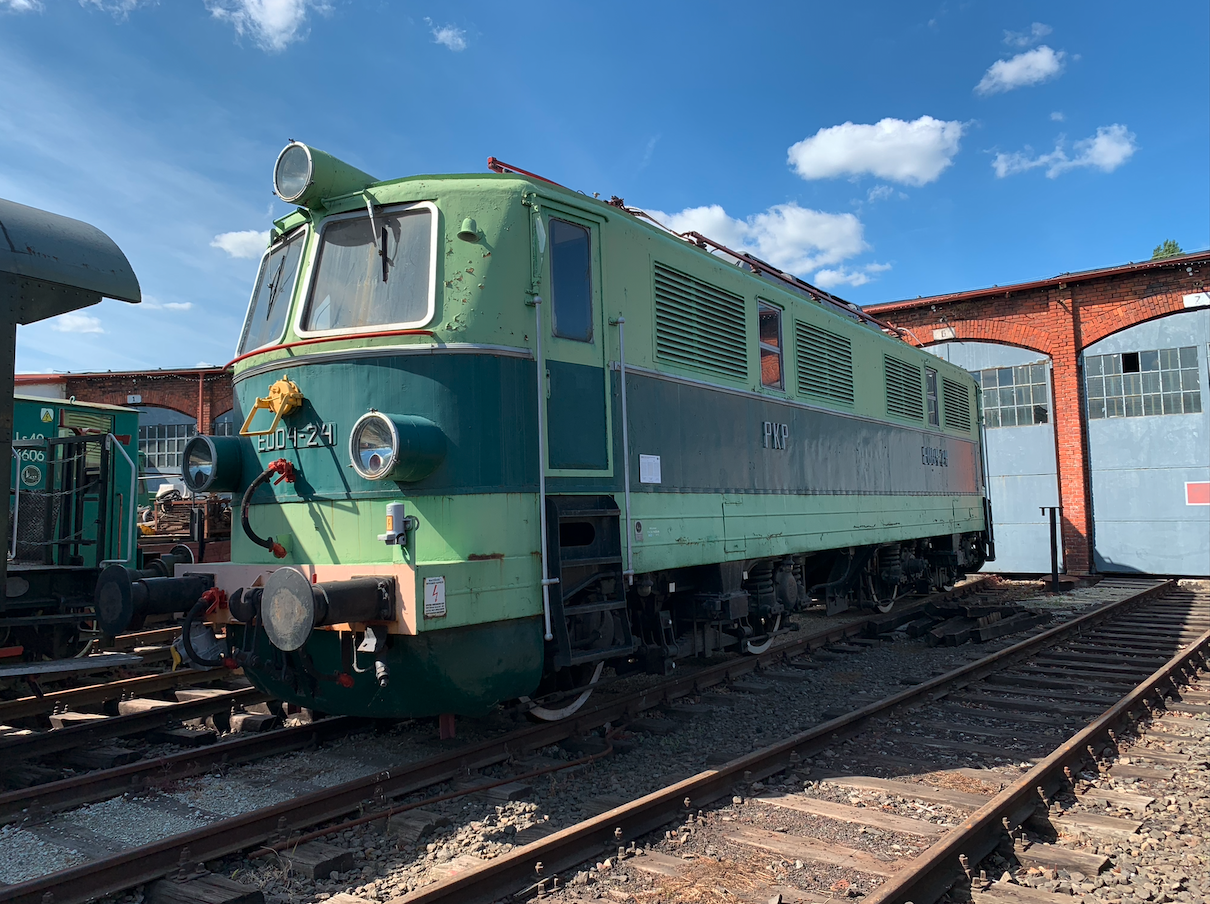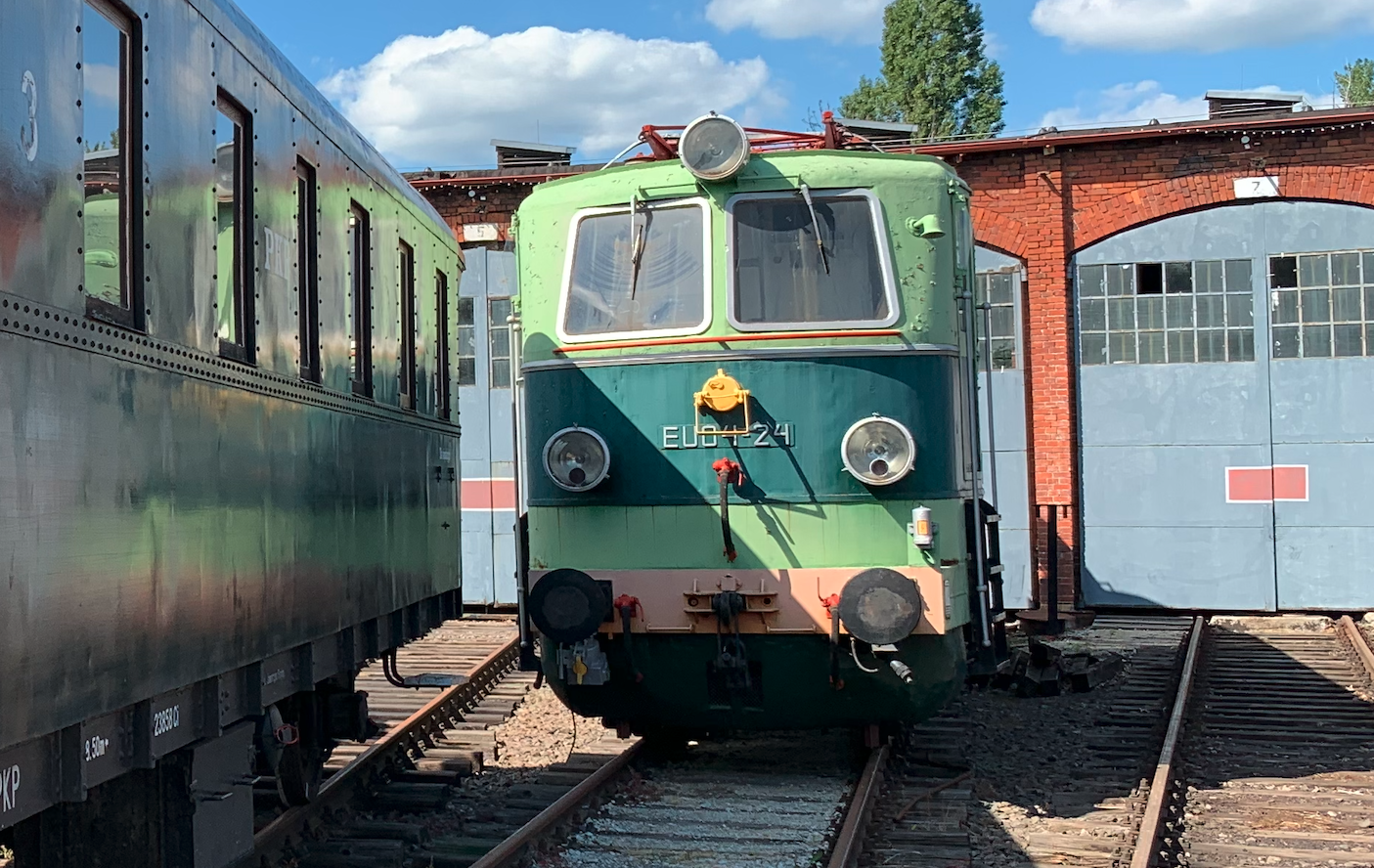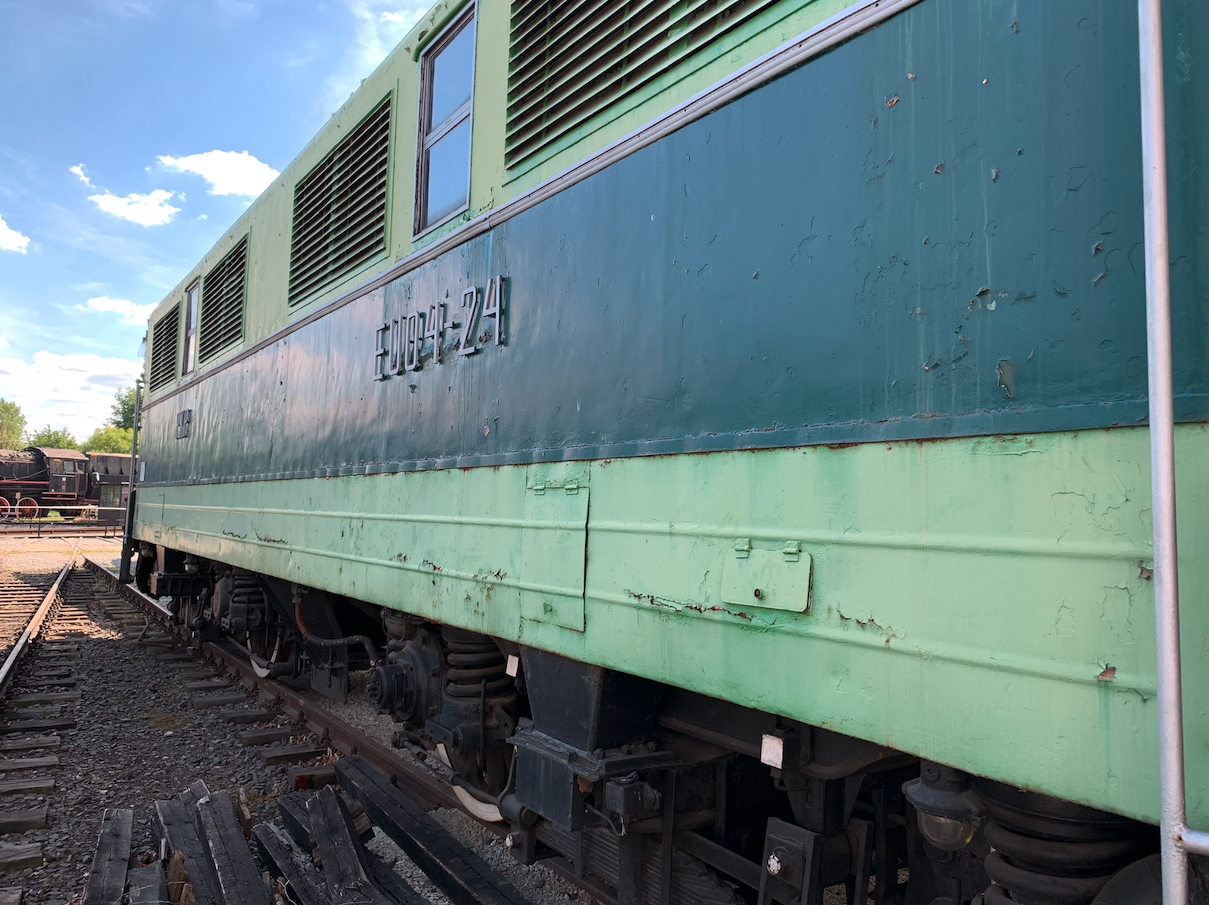Jaworzyna Śląska 2022-07-22
Electric locomotives EU04 produced in the GDR in Poland.




Electric locomotives in Poland.
The first electric locomotives in Poland were put into operation in 1933, on a distance of only 10 km, between Warsaw East - Warsaw West railway stations. These were the EL.100 series locomotives, manufactured by Metropolitan-Vickers, obtained through Electrical Export, which were designated by the Polish State Railways as type E01, and then EP01. Two locomotives were built in England, and the remaining four were built in the First Fabryka Lokomotyw w Polsce Sp. Akc. In Chrzanów. Production in Poland lasted from 1934 to 1936.
In 1937, it was judged that the EP01 locomotives are too powerful for the tasks they perform and therefore consume too much electricity. That is why the EL.200 locomotives were developed and their production started in HCP Cegielski in Poznań. The further development of Polish electric locomotives was interrupted by the German army's invasion of Poland. During the Second World War, the small network of electrified lines in the Warsaw junction was completely destroyed and plundered.
After the Second World War, the devastated country was struggling to recover. There are no electric locomotives left in Poland. The concept of purchase and construction of a new series of electric locomotives was developed by the Central Design Office of the Rolling Stock Industry (CBKPTK). In 1951, eight ASEA electric locomotives were purchased in Sweden, which were designated by the Polish State Railways as type EP03.
In 1949, it was possible to renew industrial cooperation with England and an agreement was signed with the committee representing the English industry, "Contractors Committee for the Electrification of Polish Railways". A contract was concluded for the supply of MV 185 R traction motors and other electrical equipment. These were devices of the class used before the war in the EP01 electric locomotive.
LEW EU04 electric locomotives from the factory in East Germany.
At the same time, under pressure from Moscow, cooperation with the industry of the GDR was initiated. It was not a bad choice, because the Germans already had experience in electrification with single-phase alternating current with a voltage of 15 kV and a frequency of 16⅔ Hz. In 1950, talks were started with the representatives of the LEW Lokomotivbau - Elektrotechnische Werke and Hans Beimler Hennigsdorf plants in Hennigsdorf regarding the purchase of electric locomotives and electric multiple units. The problem was that 3 kV DC electric current was and is a standard in Poland. This was completely new to the Germans. In the period 1952 - 1954, the Germans developed a prototype locomotive. Initially, the electric locomotive received the designation of the E200 series. But only the first two locomotives had this designation; E201 and E202. Then the series designation was changed to E04 (numbers from E04-1 to E04-25). Deliveries to PKP lasted until 1960.
As planned, the E04 locomotives were directed to the Warsaw - Gliwice route. Locomotives pulled both freight and passenger trains. Therefore, the designation U - universal, was perfectly correct. The EU04 locomotive drove a 650-ton passenger train at a speed of 110 km / h and a 2,000-ton freight train at a speed of 70 km / h. The locomotives were assigned to the Warszawa Zachodnia, Łazy and Kraków Prokocim depots.
The EU04 locomotives were considered modern, but they also had disadvantages. The most serious was the cracking of the locomotive's refuge. Already in 1965, the first EU04 was withdrawn from service, and in 1969, four more locomotives. In March 1983, the last items were removed from the state. The last surviving locomotive EU04-24 is in the Museum in Jaworzyna Śląska. In 2012, the locomotive received a new painting.
The EU04 locomotive has many elements in common with the E05 (EU20) locomotive, which has six axles.
Data T-T EU04:
Bo'Bo 'axle system. Service weight of 86,000 kg. Overall length 16.32 m. Wheel diameter 1.35 m. Type of electric motors GBM 530. Number of motors 4, one per axle. The GMB 530 traction motor had a continuous power of 420 kW and an hourly power of 530 kW. Continuous power 1,680 kW. Hourly power 2 120 kW. The gear with a gear ratio of 81:21 has oblique teeth. Design speed 110 km / h. Knorr brake system.
Written by Karol Placha Hetman
